Paper Doll
Paper Doll Explains Your Health Insurance Explanation of Benefits

[Editor’s note: This post originally appeared on October 9, 2023. Some content has been added or modified to provide more robust explanations.]
In more than two decades as a professional organizer, I’ve found that people have disorganized papers because they don’t create and maintain working systems for organizing what they need and letting go of what they don’t. Eight years ago, I talked about how fear plays a huge role in what people decide to keep (or fail to decide, and thus end up keeping).
If I ask someone, “Why do you have this?” whether “this” is a document or a never-worn article of clothing or a piece of broken furniture, the answer often betrays an unspoken fear. Sometimes, that fear may be related to anticipation of an unpleasant emotion — if you give away the itchy sweater (in a color that makes you look like you have the flu) that Aunt Gertrude gave you, will you eventually feel you are betraying late Aunt Gertrude?
Other times, particularly with papers, people hold onto documents long after they’ve served any useful purpose out of fear of what might happen if they need, but don’t have, that paper. This is why I developed Do I Have To Keep This Piece Of Paper?

I can tell you that that the item I see clients keep the most of, and the most often, and the longest after they’ve ceased being necessary, are health insurance Explanation of Benefits documents.
Sometimes, organizing clients ask, “How long do I need to keep these?” but more often, they don’t ask at all. Explanation of Benefits can often seem mysterious or scary. People know they aren’t medical bills, per se, but they don’t know what they are, or what they’re supposed to do with them. Understandably, if you don’t know why you have something, you’re going to be afraid to let it go. But that way, madness lies.
EXPLAINING THE EXPLANATION OF BENEFITS
First, I should clarify that while many insurance companies call these pieces of mystery mail “Explanation of Benefits” (EOBs for short), they go by other names. Depending on your insurance provider and your region of the country, the title of the document may be any of the following:
- Explanation of Payment (EOP) — Used interchangeably with EOB — a document explaining the payment or coverage details for a healthcare claim.
- Explanation of Review (EOR) — This serves the same purpose as an EOB or EOP.
- Benefits Statement or Statement of Benefits — Either term emphasizes the benefits of one’s health insurance policy re: covering (or not covering) a specific healthcare claim.
- Claim Summary or Claim Explanation — Some insurance providers use these terms to describe how a medical claim was processed, including the payment details and any patient responsibilities.
You might also see payment summary, healthcare summary, coverage explanation or remittance advice. Whatever they’re called, the purpose is to inform you about how a medical claim has been processed, including what portion of the claim is covered by insurance and what you (may) owe.
It’s a summary of the whole process from what the provider charged to what each responsible party owes, and it’s supposed to make it easier for you to understand what has happened. The problem? EOBs are often designed to be as clear as mud.
What does an EOB show?
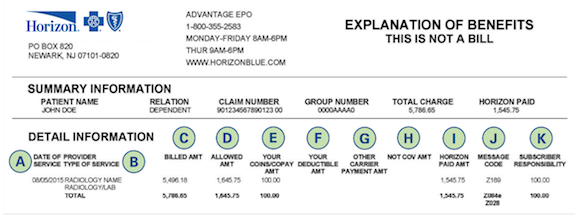
These documents are designed to convey the following:
- Who received treatment or service — This could be you or anyone included on your policy, like a spouse or child.
- The date of a medical service or procedure — Your child may have had a well-child visit, or perhaps you had the yuckies and needed a full workup and blood tests. If you had an appendectomy, not only will your surgeon’s actions be listed, but so will the services of the anesthesiologist and other specialists in attendance, plus medications, tests, and other details of your hospital stay.
- The name of the physician, lab, clinic, etc. — You may not recognize the name listed if your medical provider sends blood or tissue to a lab for analysis, or an X-ray, CT scan, or MRI requires review.
- Non-covered codes — Not everything done for your health is covered by your insurance policy. In a perfect world, whatever your provider felt was necessary would be covered, but (sigh) that’s not how it works. There may be random letters or numbers indicating why something wasn’t covered due to a wide variety of circumstances, including
- a provider, clinic, or hospital is not in-network for you (meaning, not on a list of pre-approved providers).
- a procedure or treatment not included among the items covered by your policy.
- a procedure or treatment requires pre-approval but you didn’t get it pre-approved — This may not be covered even though, if you had asked for it to be pre-approved, they would have approved it and covered it (that is, paid for it).
- a procedure or treatment is allowed, but only so often in a given time frame — For example, mental health appointments or physical therapy sessions may be limited to (for example) 10 sessions in a calendar year.
Also, while some appointments may be allowed at any time in a given year, others must be scheduled 365+ days apart. So, if you had your eye exam or mammogram 363 days ago, you may be out of luck in terms of your insurance company paying.
The A1C blood test allows physicians to track blood glucose levels over a rolling period of time; most insurance companies require 90+ days in between tests. Sometimes, medical offices are good about making sure your appointments aren’t scheduled closer than 90 days apart so that you can actually get your A1C test done (and covered), but as a patient, it’s in your best interest to know what your policy covers, and how often, so you don’t pay extra.
- The total charged by the physician, clinic, lab, hospital, or pharmacy.
- The network savings — OK, I get it your eyes have glazed over at this point. If you’ve never had much reason to see lots of doctors, go to the hospital, have a baby, or just use much of your medical insurance, this may be one of the mysteries that causes you to toss your EOBs on top of the microwave or stuff them in a drawer. I promise you a sidebar in a minute to answer all of your questions!
- The amount the insurance company paid your provider — This is self-explanatory, or it should be. If there are no codes in the “Non-covered codes” section, then you should be able to eventually match up all of your numbers to see why your insurer paid your provider as it did. We’ll get back to that.
- Your co-pay — Your policy might require you to pay a specific amount for each medical visit or pharmacy purchase. It’s common for there to be one level of charge (say, $20) for your primary care physician and another (perhaps $60) for specialists; similarly, you may have different levels of co-pays for generic, preferred, and non-preferred prescriptions.
- Your co-insurance — Co-insurance is the percentage of your medical healthcare costs you share with your insurance company, usually after meeting your deductible. For example, if you have an 80/20 co-insurance, once you hit your deductible, your insurance company will pay 80% of covered (that is, allowed) costs, and you’ll pay the remaining 20%…until you hit your out-of-pocket maximum.
- Other insurance — Depending on your stage in life, you might only be familiar with having one kind of health insurance at a time. However, if you have (for example) Medicare, you might also have a secondary health insurance policy that covers a percentage of what’s left over after your primary policy (or Medicare) pays.
- “You owe(d) provider” — This is usually the bottom line, and it tells you what, all-told, you should have to pay your doctor, the pharmacy, the clinic, the lab, or whomever. In a perfect world, the bill you get matches that amount, it’s what you expect, and everyone’s happy.
Still with me? Health insurance in the United States can be confusing, though many insurers try to make it more comprehensible.
But how does it all work?
Here’s how you imagine it works. You have a tiny booboo and you have insurance. You go to your doctor and she fixes your booboo. You pay the doctor your co-pay of $20 and you leave. After you walk out the door, someone who works for your doctor does the typey-typey thing on a computer, relaying codes for the procedure you had done, and the insurance company pays the doctor the rest of what the doctor charges, and everyone’s happy. Right?
Well…not necessarily. Things may be more complicated, and you may find yourself lost:
- If the typey-typey person types the wrong code, perhaps for something your insurance doesn’t cover, then you may get an EOB full of “Nuh-uh, we’re not going to pay for this!” codes and then you’ll get a bill from the doctor for hundreds or thousands of dollars you weren’t expecting.
- The typey-typey person may not get around to billing the insurance company, or the insurance company may be pokey and not pay them as fast as they want, and you might get a bill for the whole amount. This is why, when you get a bill you aren’t expecting, you must always:
- Look at the bill to see if it lists the insurance company’s paid portion
- Look at the EOB to see if the insurance company is saying they paid something that the administrative office (the typey-typey folks) haven’t yet processed.
- The numbers don’t add up. Before you get stressed about this, it helps to know how insurance works. Too often, I hear clients say, “I hit my deductible already this year, so I don’t know why the doctor is sending me a bill” or “The amount the insurance company paid the provider plus the amount I paid doesn’t add up to what it says the doctor is charging.” Both of these are easy to explain, but because they don’t teach any of this in school, most people don’t learn it until or unless they experience serious medical situations.
“Why am I still getting billed if I’ve already hit my deductible?”
The deductible issue often confuses people. First, you pay a monthly premium (think of it like a subscription) to have insurance. Only instead of getting to watch the newest juicy goodness on Netflix, your premium gives you some benefits.
Along with the premium, you get may get certain things for which you don’t have to pay extra, like a flu shot or an annual exam. But for lots of other things, like doctors’ appointments and procedures, you will likely have a copay or co-insurance, as we discussed above. All of these charges add up until you hit your deductible.
Your deductible is the amount you must pay out of pocket for covered healthcare services before your insurance plan starts to pay. Once you’ve met your deductible, then your insurance plan will usually cover a percentage of the remaining costs as defined by your plan.
Then, if you keep racking up medical expenses, there’s a point at which you may hit your out-of-pocket maximum. As you may have guessed, that’s the maximum you’ll have to pay out of your own pocket, after which (not counting your monthly premiums), the insurance company pays for everything…until you hit the end of the year. And then on January 1st, everything re-sets to zero.

Happy New Year by Sincerely Media on Unsplash
Let’s say your deductible is $1000 and your out-of-pocket maximum is $5000. That means that until you hit your deductible (and paid $1000) you will pay providers whatever your insurance policy says you must pay up to that amount. That includes co-pays and co-insurance for doctors, pharmacies, and everyone else.
Once you’ve paid $1000 (either in one lump sum or in a bunch smaller payments), your insurance kicks in, and from the next dollar of medical expenses (so, $1001) up to $5000 (your out-of-pocket maximum), your insurance company will pay a percentage (often 80%) and you’ll only be responsible for the remaining (often 20%) until you reach your out-of-pocket maximum.
But why don’t the numbers add up?
Remember those “network savings?” Insurance companies and the providers in their networks have a deal. Their contractual agreements say that if their policyholders are serviced by these doctors (or hospitals or pharmacies), there’s a limit on how much they can charge.
Let’s look at it in action.
If you have no insurance: Your doctor fixes your booboo and charges you $1000. You pay your doctor $1000. No coupons, no discounts. No paperwork.
If you have insurance, but haven’t hit your deductible for the year: Your doctor fixes your booboo and charges $1000. The insurance company immediately says, “Hey, Doc, we’ve got a deal. You aren’t allowed to charge our policyholders $1000. You can only charge $400!” The doctor grumbles.
The insurance company pays nothing (because you haven’t hit your deductible) but you get the benefit of a discounted total cost that is much lower than what the doctor wanted to charge. And everything you pay, including this $400, adds up until you hit your deductible.
If you have insurance, have hit your deductible, but haven’t hit your out-of-pocket maximum: Now, the insurance company pays a big chunk (like 80%) of covered costs and you pay the rest. Everything you’ve paid toward your deductible, plus everything you pay now, piles up as you head toward your out-of-pocket maximum.
If you have insurance, have hit your deductible, and have hit your out-of-pocket maximum: This is that weird circumstance where you’ve had so many medical expenses in a year (boo!) that you finally end up not having to pay for anything (yay!).
So, fixed booboos and tonsils removed and whatnot later, all of your out-of-pocket expenses reach your maximum, $5000. As of the next dollar of medical expenses, $5001, insurance pays for everything, and you shouldn’t even have to peek at the paperwork beyond eyeballing those great “You owe provider $0.00” lines.
WHY DO YOU NEED AN EOB?
So, now that you know what an EOB says and why the numbers are sometimes wacky, you may be wondering why you need them, and perhaps more importantly, how long you have to keep them. This is why, when my clients ask me, “Do I have to keep these EOBs?” or “How long do I have to keep these EOBs?” the answer is, it depends.
(Sorry, campers. With so much in the world of paper and information organizing, the answer is always some variation on “it depends.”)
As much as you don’t want to do it, as a policyholder, it’s really important to review your EOBs carefully to ensure accuracy so you understand your financial obligations related to healthcare services.
If you pay every bill the doctor sends, without checking it against your EOBs, you might be overpaying by either duplicating what insurance has already paid (or is in the process of paying) or paying more than the discounted rate you’re due because of network savings.
If you pay every medical bill w/o checking it against your EOBs, you might be overpaying by either duplicating what insurance has already paid or paying more than the discounted rate you're due because of network savings. Share on XEOBs exist so that:
- You can understand real healthcare costs. Your EOB breaks down what the doctor charged, what the insurance company actually “lets” them charge, and what (if anything) the insurance company paid on your behalf. When you see all the actual numbers, you may get a sense of whether you’re overpaying for health insurance (vs. the coverage you’re getting for your needs), and you’ll definitely have a better sense of how U.S. healthcare finances work. (Sorry. You’ll probably want a cookie or a nap to cheer you up after that.)
There’s transparency so the process doesn’t seem so opaque. Yes, unless you take delight in checking the math, just seeing the billed charges, allowed amounts, network savings/contractual adjustments, and your responsibility (including deductibles, copayments, and/or coinsurance) gives you the opportunity (whether or not you take it) to get a handle on what the real costs of your health issues are.
- You can verify how a claim was processed — I’m sure most administrative offices for medical practitioners and hospitals are stellar professionals. But people make mistakes, and computers make it easy to make mistakes, and those mistakes can have real consequences for you as a healthcare consumer. If you get a bill that doesn’t match your EOBs, it gives you the opportunity to call attention to the discrepancy. EOBs help you verify that your insurance claims were processed correctly and that your insurance benefits (for which you pay!) get applied accurately.
 Gavel: Creative Commons/U.S. Air Force photo by Airman 1st Class Aspen Reid/af.milvv
Gavel: Creative Commons/U.S. Air Force photo by Airman 1st Class Aspen Reid/af.milvv
- You have documentation to help with disputes and appeals — Again, the EOB lays out the process by which a claim was handled. When you see in black-and-white that a procedure or treatment wasn’t covered due to a “non-covered code” that you don’t think is applicable, you can chase down the error to dispute it or work with your medical provider to appeal.
- You get documentation for your medical and financial records. — You don’t need to keep your EOBs for tax purposes, per se. The IRS doesn’t consider your EOBs as proof of your medical costs; that’s because EOBs don’t say what you paid, but what the insurance company paid. Yes, an EOB indicates what the insurance company believes you owed the doctor, pharmacy, or hospital, but is not proof that you actually paid for those expenses.
EOBs document what healthcare services you received and the associated costs. As such, they can help you track information to accurately prepare your taxes with regard to healthcare-related tax deductions and remember what reimbursement you want to seek from health savings accounts (HSAs) or flexible spending accounts (FSAs).
- You can use EOBs to help you plan your future healthcare expenses. Eyeballing your EOBs will help you estimate the out-of-pocket costs you and your family generally use. This might help you plan how you budget for anticipated medical expenses (especially early in each calendar year, before you’ve hit your deductible).
HOW LONG SHOULD YOU KEEP YOUR EOBs?
I find that almost everyone saves their EOBs much longer than necessary.
For Typical Individuals and Families
If your medical history is uncomplicated (and your insurance company allows you to access your EOBs online in your health insurance portal), especially if the EOBs are accessible for at least one year, you may want to request that they cease sending you paper copies.
If, in a typical year, you get one EOB after your annual checkup and another after you get a mammogram, and that’s about it, just check your EOBs online. If you like to keep your own records, download the digital version as a PDF you can keep in your own digital records on your computer or in the cloud. As always, keep your digital records backed up!
For most people, I recommend keeping your EOBs for about one year, or at least until you do your taxes for the prior calendar year. This way, you can track your healthcare expenses, compare them with any medical bills you receive, and ensure that insurance claims have been processed correctly.
Most of my clients will actually compare and contrast numbers when paper documents are set side-by-side; highlight, circle, or otherwise note important figures. Start the year with one folder, like “EOBs 2024.” If you tend to have a lot of medical bills (perhaps if you’re dealing with an ongoing health concern for which you have lots of medical appointments), make a folder for each calendar quarter.
For Complex or Special Situations
If you get involved in a dispute or lawsuit with either a medical provider or your insurance company, keep all of the relevant bills, EOBs, correspondence, and contemporaneous notes you take during phone calls or meetings until the dispute is resolved or the lawsuit is settled or adjudicated.
If you have difficulty wrangling these EOBs and bills, work with a professional organizer (like me!) who can make sense of paperwork. Find one near you (or who works virtually) at the National Association of Productivity and Organizing Professionals.
And if you have trouble resolving a claim, enlist the help of an independent Claims Assistance Professional (CAP) through the The Alliance of Claims Assistance Professionals.
When An EOB Is Not Really What You Need
EOBs are designed to track financial information about your medical experiences.
So, yes if you’ve got complicated or chronic long-term conditions, EOBs may help you track the history of your illness, the dates of important procedures, and the physicians you have seen.
However, I encourage clients to either scan older EOBs or use them to develop a log of the timeline and essential information in a spreadsheet before discarding the actual paperwork. Reduce the paperwork and streamline the data!
For more information on maintaining your health records, read Reference Files Master Class (Part 3) — Medical Papers.
No matter what, be sure to protect your (and your family’s) privacy and your personal information. Shred EOBs to prevent identity theft or unauthorized access to your health information.
As we reach the last quarter of the year, it’s helpful to review EOBs to get a sense of your medical benefit usage so you can plan whether it makes sense to have a procedure this year (if you’ve already hit, or are close to hitting, your out-of-pocket) of see if you’ve been over- or under-insured this year in order to plan next year’s coverage.
Stay organized, stay safe, and be healthy!
Use the Rule of 3 to Improve Your Productivity

It’s Monday — the first Monday of a new month, of a new quarter, and the last quarter of the year. It may suddenly feel like a lot is riding on getting things crossed of your list so you can make those dreams come true before 2023 is in the rear-view mirror.
RECAPPING THE ESSENTIALS OF TACKLING YOUR TO-DO LIST
Back in May, in Frogs, Tomatoes, and Bees: Time Techniques to Get Things Done, we looked at a spate of productivity concepts for breaking down the hours of your (preferably time-blocked) day to effectively use your discretionary time (that is, the part of your schedule not determined by your boss, school, or firmly-scheduled obligations). We started with the essential elements of accomplishing things:
Knowing what to do — This involves a brain dump to capture every potential task stuck in your head, adding to it from everything in your various in-boxes and buckets (GTD-style), and creating a master list, whether that’s pen-on-paper or a task app.
Knowing what to do first — Prioritizing tasks involves a complex intersection of what is important and urgent. We shorthanded the process with the Eisenhower Matrix (which, as explained in Paper Doll Shares Presidential Wisdom on Productivity, wasn’t invented by the Ike we like, but was attributed to him due to a speech he gave and was made more famous by Stephen Covey).
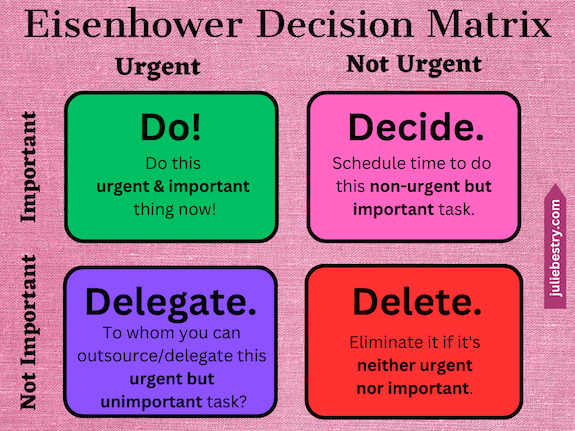
The Eisenhower Matrix gives you the opportunity to (literally or just figuratively) graph each task from your massive brain-dumped list to identify where it falls along a continuum of importance and urgency. From January through mid-April, filing your taxes is important, but it only becomes more urgent as St. Patrick’s Day is behind you and April 15th draws nearer.
Conversely, this Friday’s registration date for an adult education class on French cooking has what appears to be an urgent task; however, if learning how to make Julia Child’s famed Boeuf Bourguignon isn’t that compelling and you were only doing it to please your mother-in-law, it may fall low on the importance scale.
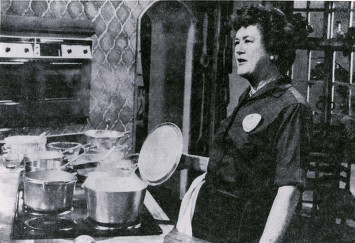 Julia Child on KUHT/By KUHT via wikimedia commons
Julia Child on KUHT/By KUHT via wikimedia commons
A big part of identifying the value of a task may involve looking at what your motivation is. You perform extrinsically-motivated behaviors in order to receive some external reward (or to avoid an external punishment). You might work at a job for a paycheck, work hard in a class to get the grades that allow you to get a scholarship, or make that Boeuf Bourguignon to keep the peace between family members (because it’s hard for people to snipe when their mouths are full).
Intrinsically-motivated behaviors are those that you do because they fulfill you personally. These include passion projects like volunteering, participating in hobbies and sports, or even simultaneously compelling but challenging life activities, like parenting.
Sometimes, you may find yourself frustrated that the very things you value for your sanity-preserving self-care are less valued by society. (This is largely because, as we discussed in our series on toxic productivity, late-stage capitalism values producing work that yields revenue, generally for the people above you in the hierarchy. Sigh.)
Of course, the ideal is to find opportunities for extrinsically- and intrinsically-motivating behaviors to dovetail. When that happens, the things that are important are easier to accomplish because they give you personal fulfillment and extrinsic rewards.
Making something a high priority, per se, doesn’t ensure that you’ll do it, but if that task is important, not just for keeping you out of debtor’s prison but also making your heart sing, you’ll do it less begrudgingly, and if it’s urgent, you’ll find you’re less likely to procrastinate.
You’re probably not going to find that your love of the game will allow you to become a professional pickleball player — more power to you if you do! — but you may find that by becoming more efficient and effective at your for-a-paycheck job will yield more free time to pursue a passion that could turn into a new livelihood.
Once you gauge your each task’s relative importance and urgency, you can move forward to knowing what to get done today (vs. delaying to later in the week), what you might delegate, and what you can hang it in the maybe/someday closet.
Do it! — The final piece of the puzzle involves making time to do what you’ve decided to accomplish.
MANAGING OUR DAYS BY MANAGING OUR HOURS
Back in that post I referenced, Frogs, Tomatoes, and Bees: Time Techniques to Get Things Done, I reviewed well-known and lesser techniques for hunkering down and getting tasks done. I encourage you to read the prior post for details of the methods you find less familiar, but in general, the post reviewed:
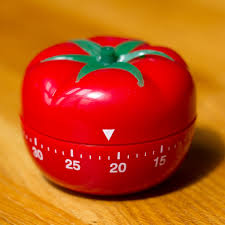
Pomodoro Timer by Michael Mayer CC By 2.0 Deed
- The Pomodoro Technique — At its most basic, the process involves identifying a task to work on now, setting a timer for 25 minutes, focusing on that task for 25 minutes without interruption, and taking a short break. Proponents believe it short-circuits procrastination but detractors note that it prevents getting into a flow state.
- Tocks — This variation on the Pomodoro Technique involves working 45 minutes rather than 25, and adds the step of taking note of distractions as they arise for later analysis.
- The 90-Minute Focus Block — Here, the work blocks expand to 90 minutes and the breaks extend to 20. The expanded time frame is based on research in neurobiology and how our brains use potassium and sodium ions to conduct electrical signals indicates a biological component to our ability to effectively focus.
- 52/17 Method — Splitting the difference between the traditional Pomodoro and the 90-Minute Focus Block, this accents 52-minute sprints of dedicated and intense work followed by mentally-refreshing breaks. It’s backed by behavioral analysis rather than neurobiology.
- The Flowtime Technique — This method starts like all of the others, with uninterrupted work sessions, but instead of ceasing at the behest of an alarm or other external force, you work until you start to feel distracted or mentally or physically fatigued. While this method involves a lot of administrative work for logging both distractions and statistics regarding work patterns, it’s probably the most ideal for creative endeavors, as you ignore the clock and embrace the flow.
These methods work in concert with the principles we’ve discussed regarding time blocking, particularly from these two posts:
Highlights from the 2023 Task Management & Time Blocking Summit
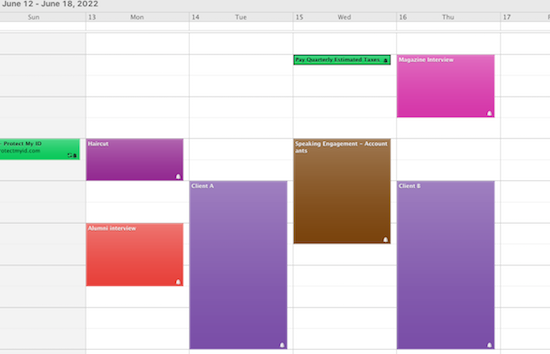
Putting it all together, you figure out what you need to do (overall), identify your priorities, and block your time to ensure ample space in your schedule for accomplishing tasks. Then you get to it!
USE THE RULE OF 3 TO KEEP LIFE FROM GETTING IN THE WAY
All of the above is great for once you get your butt in the chair and have identified a specific task, but let’s face it, getting to that point? It’s a lot.
If you work in an environment where most of your daily schedule can be firmly set in stone (or bytes) with very little to distract you, you’re lucky. But most people experience a multitude of interruptions from co-workers and bosses and tiny humans and senior parents (whether they have physical challenges or just need tech support). Others are dealing with mental and physical health crises and have limited spoons (that is, energy and capacity) to get through the day, let alone accomplish prioritized tasks.
If you’re feeling overwhelmed, there’s a productivity principle that can help you get a foothold when things feel like their going off the rails.
It’s called the Rule of 3.
At its most basic, the Rule of 3 asks you to apply your focused attention, intentionally, to three goals or main tasks for a specific time frame. Generally, and the way we’re going to examine it, that time frame is a day, but you could apply it to a week (or a four-day conference, or a working weekend) or whatever period of time you need.
The key is that you are concentrating on a small number of crucial tasks to maximize your focus, your effectiveness, and your overall productivity. The steps are simple:
Identify three key tasks.
When you plan your day, identify the three most important goals or tasks that you want to accomplish. These may all be work tasks, or they could be a combination: one key work task, one goal item for your family, and one for self-care.

These three should be whatever you think will have the most significant impact on your personal projects, your work projects, or whatever matters the most to you.
And obviously these aren’t the only three things you’re going to get done in a day. You’re not going to skip processing email or picking your kid up from Drama Club or brushing your teeth. We ALL do more than three things in the day. But the Rule of 3 says:
Whatever else I’m doing today, I am absolutely focusing my time and attention to
GET THESE THREE GLORIOUS TASKS COMPLETED!
We’ve already talked at length about the value of the Eisenhower Matrix in prioritizing, and that’s a great place to start, but there are other concepts to help you pick your three key tasks.
Parkinson’s Law states that work expands to fill the time available for its completion. We’ve all had days where we fiddled around and didn’t start working on “the thing” until just about the time we knew we had to being in order to finish on time.
But imagine not doing that. Imagine getting the thing done. And then the next thing. And one more. Imagine not taking all the time available and just taking the time necessary.
Limiting yourself to three tasks creates a sense of urgency. If you recognize that to honor your obligation to yourself, you will focus on achieving the three key tasks, you cut procrastination off at the pass. No fiddling.
Next, experts in cognitive psychology have found that we generally have limited attention and cognitive resources. We get tired. We get bored. We get distracted. We get antsy. We get hangry. By narrowing your focus to a small number of tasks, you are able allocate your attention and mental energy more effectively, which aligns with the Rule of 3’s idea of prioritization.
Finally, Hick’s Law is a psychological principle that says that the time it takes to make a decision increases with the number and complexity of choices. Once you limit your choices for the day to just three key tasks, you are reducing the signal-to-noise ratio and the decision-making complexity. The less you must think about doing, the more you can focus on the task at hand. (And remember, you can always do more of your important (and urgent) things once you’ve done your big three!)
Commit to each of the three priorities and focus.
OK, yes, you still have three things, and you’ll have to decide which of these to do first, and second, and third. You’ll have to figure out into which time block you’ll slot each item. And then you’ll have to blur out two of them while you focus on a third.
In theory, the Rule of 3 calls on you to focus your energy and attention on completing these tasks before moving on to less critical or lower-priority activities. And obviously it discourages multitasking and giving into distractions while working toward finishing the key goals. You can use any of the focused work-session techniques listed up above once you sit down to focus on the task, but before you can focus on the tasks, you have to commit to them, to the idea that you WILL do these three key tasks today.
OK, let’s step back.
Paper Doll recognizes the need for a reality check. You will not always be able to tackle all three key tasks first before getting on with your day unless your efforts do not require the involvement of other human beings (whether tiny humans or large egos).
For example, last Friday, my car was finally ready for pickup. It’s been a long two months since it was stolen, recovered, and had to go through many, many repairs. (For reference, Organize to Prevent (or Recover From) a Car Theft tells the initial tale; everything since has been a nightmare of dropped balls, global supply chain failures, and random poopyheads.) But I also wanted to get my flu shot and had two essential financial tasks.
The car issue was actually a series of interlocking tasks. I had to confirm the specifics with the body shop, and wanted to view and approve all the work before paying my deductible and returning the rental car, which involved more phone calls and scheduling, and I needed to approve the last round of digital insurance payments.
The car goal was both important and urgent, as I didn’t want to be charged for further days of the rental car, and frankly, I missed my adorable red Kia Soul as if it were a child away at summer camp for far too long. But while most of the car’s mechanical and body work were completed, there were a few painting-related flaws, and a review of the final no-longer-estimated estimate yielded lots of new questions. However, by staying single-minded on the task and not being distracted by calls, texts, and emails, it eventually got done, and I felt an immense sense of relief and completing this key task for my day.

Getting my flu shot involved confirming that my pharmacy had the flu vaccine and that no appointment was necessary. (Last year, appointments were required and only given on certain days of the week, which often conflicted with my client schedule.) And the bank tasks, though easy, were dependent in part on the arrival of the mail, and the fill-in postal carrier did not deliver the mail until close to 6 p.m.
Celebrate your wins!
Being successful with the Rule of 3 means acknowledging completion of the task and feeling satisfaction. Far too often, we rush through what we must do without celebrating that we’ve actually done it. However, taking the time to celebrate wins improves your confidence, boosts your motivation, and will make it easier to approach other tasks (especially long-avoided ones) with verve.
For a sense of psychological benefit of this step in completing key tasks (particularly those we might define as “adulting,”) I direct you to Hazel Thornton’s recent post, High Five Friday. She explores turning this celebration of completion of key tasks from a solitary act into a social one, and as I’ve watched people follow Hazel’s lead, the evident delight people experience is palpable!
Re-evaluate, or Lather/Rinse/Repeat: The “What’s Next?” Step.
OK, so you figured out what to do, did it, and gave yourself an atta-girl or atta-boy. Now review the process. Evaluate your progress to determine the big question: what’s next?
(Fans of The West Wing recognize the power of those two words. Lin-Manuel Miranda created this video for the late, great The West Wing Weekly podcast. There are two profanities within (at :50 and 1:04), so please be forewarned.)
This is the time to evaluate your progress (and your process for getting there). Determine the next three most important tasks to focus on, whether that’s for the remainder of today, or for tomorrow, or your next key time period.
You’re creating a continuing cycle of identifying key tasks, prioritizing them, completing them, doing a happy dance and high-fiving yourself, and reevaluating what worked and what didn’t. All of this is designed to help you maintain a higher level of the good, non-toxic kind of productivity that keeps you aligned with your ultimate goals.
Why does the Rule of 3 work?
First, it’s simple, so you may actually try it. Everyone loves a new productivity technique, but the more working parts, the less likely you will be to do more than think about using it.
Second, three is a magic number.
Whether it’s “lions and tigers and bears” or “faith, hope, and charity” or if you’ve been hearing a lot about the Roman Empire lately, “friends, Romans, countrymen.” It’s easy to keep three daily priorities in your head, so if you check in with yourself at lunchtime or mid-afternoon to see how you’re doing on your goals, you can mentally measure your progress in seconds.
Finally, and most importantly, the Rule of 3 is an effective approach because it prevents the overwhelm and decision fatigue that often results from having a long, fiddly, and overwhelming to-do list.
The Rule of 3 is an effective approach because it prevents the overwhelm and decision fatigue that often results from having a long, fiddly, and overwhelming to-do list. Share on XNarrowing your focus to just three tasks sets you up to more efficiently allocate your time and energy, so you can accomplish more meaningful things. Again, this may be work, but could be personal enrichment or self-care. Completing a project for work may be important, but exercising and having essential medical appointments and living a fulfilled life are of inestimable importance and urgency. In other words, you matter. Paper Doll says so!
ADAPT THE RULE OF 3 TO YOUR NEEDS
As with any productivity concept, the Rule of 3 is a only guideline. There is no “boss” of the Rule of 3 in the same way that practitioners of GTD look to David Allen; indeed, I’ve done extensive research and have yet to find an originator. I originally read about the Rule of 3 almost ten years ago in Chris Bailey‘s The Productivity Project: Accomplishing More by Managing Your Time, Attention, and Energy.
Paper Doll Organizes You To Prepare for an Emergency

September is National Preparedness Month.
The variety of emergencies to consider is mind-boggling. Last week, we observed the 22nd anniversary of 9/11 and the University of North Carolina at Chapel Hill experienced its second active shooter since late August.
Just this month, massive floods have overwhelmed Libya, Hong Kong, and Greece, and closer to hope, Pennsylvania, West Virginia, and the festival-turned-city of Burning Man in Nevada were all overwhelmed by storms and floods.
A little over a week ago, a 6.8 magnitude earthquake caused devastation in Morocco. There always seem to be wildfires in the United States, while in the past year, smoke from Canadian wildfires drifted down through the U.S., causing breathing problems for allergy and asthma sufferers. Two weeks ago, there was a landslide into a grocery store parking lot in Gatlinburg, Tennessee, a few hours from me.
Fire and smoke, flood and blizzards, tornadoes and hurricanes — they can’t be ignored, and though this isn’t a forum to discuss global climate change, it is essential that we change and upgrade our emergency preparedness habits.
Organizing is a key principle in emergency preparedness. Without organization, there’s no way to communicate with loved ones, quickly locate what you need to protect yourself during the emergency and recover afterward, or get to a safe place and arrange for a secure location during the recovery period.
We can’t cover all aspects of emergency preparedness in one post. I recommend everyone visit the federal government’s Ready.gov to get started with emergency and disaster preparedness.
CREATE AN EMERGENCY KIT
Building an emergency kit involves is more than making sure that you have first aid supplies, although that’s important.
Start with the essentials
- Water and non-perishable food for several days — Depending on how widespread the emergency is, you may not have access to restaurants, cooking facilities, or electricity. It’s estimated that you should have one gallon of water, per person, per day and note that while water doesn’t expire, those dates on bottled water refer to the expiration of the plastic bottle, after which the chemicals in the plastic begin to break down. Periodically through the year, replace your emergency water bottles with new ones and use up the old ones before the expiration date. For food, aim for high-energy, high nutrition things that your family will actually eat. Be realistic, not aspirational!
- Can and bottle openers — If you have canned/bottled emergency food, please make sure you have a way to access it.
- Dining supplies — An emergency probably isn’t the best time to be picky. Stock paper plates and towels, and plastic utensils and cups.
- First aid kit — Stock your own if you’ve already got many of the supplies, or purchase a pre-made first aid kit from the pharmacy section of a Big Box store (Target has nice ones) or Amazon.
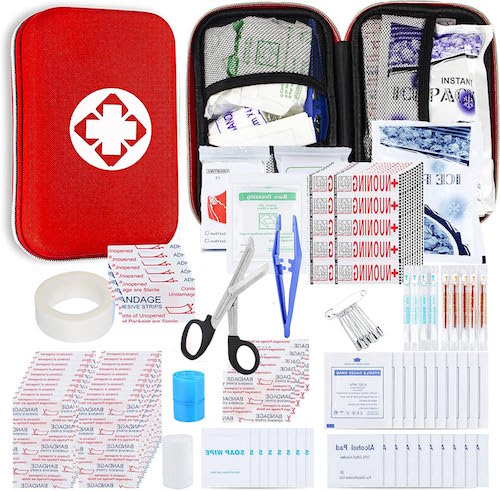
- Things that make stuff light up or go — That means extra batteries, chargers, and power banks. Keep matches in a waterproof container, or get a few long-handled lighters. Cell phones have flashlights, but you don’t want to wear down your phone’s battery if you don’t have access to electricity or your car in an emergency. Almost all modern cars have USB outlets for charging your phone, but if there’s a chance you’ll be in an older vehicle, there are chargers you can plug into a car’s cigarette lighter.
An NOAA Weather Radio — I recently tried to help a client with low vision set up her inexpensive emergency weather radio, and we were disappointed with the poor quality and the lack of intuitive design. CNN has a good article on The Best Emergency Radios in 2023. In addition to one that takes batteries, a hand-crank option not only relieves your fear of running out of power, but it gives elementary school-aged kids an activity to occupy them and make them feel useful.
- Plastic sheeting and duct tape, in case you have to shelter in place, and masks (to prevent inhalation of dust, contaminants, and germs). If it was good for nothing else, COVID got most of us in the habit of having masks on hand.
- Fire extinguisher — You should have these in your home and car anyway. At the very least, get the hand-held kind that look like bug spray cans. Consider emergency fire blankets, too!
Paper Doll Says: Don’t Get Stuck in a Rut — Take Big Leaps

Are you feeling stuck? When you flipped the calendar to the new month and realized how close we are to the end of summer, and even the end of the year, were you struck by a gnawing feeling that you’ve been mired in the same place for too long?
Are your New Year’s resolutions the same every year? Do you make the same wishes, have the same complaints, and feel like you’re Groundhog Day-ing it through life?
At the end of May, in Organize Your Summer So It Doesn’t Disappear So Quickly, we talked about how the lack of structure, novelty, and sensory clues for the passage of time (along with lack of self-care and an excess of technology) can make us sluggish. We may keep doing the same things, over and over. We may not notice that sometimes we are very efficiently doing the wrong things.
Perhaps it’s time to stop doing some things, start doing other things differently, and to take bold strides on other things altogether.
Although most people think of professional organizers in terms of their possessions, I usually talk about how I help people manager their stuff. Stuff is more complex than just possessions. Your stuff may be what’s piled up on your desk or precariously balanced on your kitchen counter or squished into your closet.
Alternatively, the stuff causing you overwhelm may be the excess in your schedule rather than your space. The temporal, rather than the tangible, can also weigh you down.
However, it’s possible to be crowded out of your enjoyment of life by other than too much in your space and schedule. You could have so much going on in your brain that you can’t accomplish what you want.
The stuff in your head could be ADHD. It might be anxiety or clinical depression. And it certainly could be fear. In fact, several years ago, in Paper Doll Talks With Smead About Fear & Disorganization, I shared how fear holds us back.
Too much, or at least too much of what doesn’t serve you, can keep you from moving forward, from taking leaps. Today, we’re going to look at how to get out of a rut and then consider taking bold leaps forward.
HOW TO GET OUT OF A RUT
Investigate Your Life
Pull on your Sherlock Holmes deerstalker hat, twirl your Hercule Poirot mustache, jump in your Nancy Drew blue roadster, and think about what’s feeling stuck in your life. Let’s start by identifying the symptoms of being in a rut.

Have you lost your enthusiasm? If you can’t pinpoint obvious reasons (lack of recuperative sleep, diagnosed depression, a bed that’s just too comfy) for not wanting to get out of bed, you may be in a rut.
When someone asks you what you want — what to do, what (or where) to eat, or where to go, whether for the afternoon or for a holiday — do you mentally check out? Sometimes, when you’re in a rut, you can’t even imagine different ways of doing things.
You’re not broken. You’re probably in a rut.
The next step is to figure out why? Is it you, or is it what’s in your space, your schedule, or your head (that shouldn’t be) or what’s not there that should be? Understanding the root cause is essential.
It is too much of something? Is there clutter that’s keeping you from entertaining in your space or feeling relaxed enough in your home to pursue your activities? It may be obvious, as this is an organizing blog, but check your space for excess. Are you in a rut physically because you always have to move things off the counter to reach the microwave, or pull suitcases out of the closet to get to your clothes?
Do you have too many activities filling up your schedule? I don’t just mean work-related, though too many Zooms or in-person meetings can wear you down. Maybe your kids are signed up for so many after-school activities, which means you’re constantly schlepping them to-and-fro. Maybe you’ve been in the same clubs with the same people for what seems like forever.
Have you outgrown the life you’re leading? I’m not suggesting you need to take the 10:25 to Reno and leave your job and family behind. But there may be aspects of your life that no longer fit, like a too-small pair of jeans that makes you feel like you can’t really breathe.
It’s possible that you’ve grown out of the things you’ve collected. When my sister was in college, she had a few small elephant-themed items, and soon it became habitual for people to give her elephants in the form of earrings and knickknacks and stuffed animals. Somewhere after a few decades, I noticed that she wasn’t displaying the elephants. She was over the elephants.
And again, you may have things in your schedule that don’t serve the person you are, or the person you want to be. You calendar might not be overloaded, but the things in your calendar may no longer be giving you joy. Are you going to that book club because you’ve always gone or because you love the books and the people? (If you’re going just because you love the cheese plate, be assured that you really can buy that yummy cheese and eat it all yourself.)

Cheese board photo by Andra C Taylor Jr on Unsplash
Track the Clues: Routine or Rut?
If, while playing detective, you find it hard to actually detect what’s wrong, you may need to get more granular. Pick a random week (or start with a day if a week seems overwhelming) and take note of what you do and how your week (or day) flows.
- Are there things you do the same way, over and over?
- Does each day’s schedule blend into the next?
- Do you have trouble differentiating between the average Monday and the average Thursday? (Does every day feel “average?”)
You may be thinking, “But Paper Doll, I have a routine! Isn’t the best way to make sure everything gets done to have a routine?”
Yes!
But also no, not always.
Routines and ruts are related concepts, but they have distinct differences:
A routine is a planned and organized set of tasks or activities that you regularly follow. Your laundry routine makes sure that you don’t have to send your tiny humans to school in Wonder Woman bathing suits under their clothes. Your morning routine gives you the centering, mindful energy, nutrition, and caffeine to keep you from smacking your annoying co-workers with a keyboard.
You design your routines to help you manage your time, reduce stress, and increase efficiency.
Conversely, a rut is a stagnant pattern, one that makes you feel unmotivated or unfulfilled. When you’re in a rut, you may find yourself going through the motions without any sense of intentionality. You’re doing what you’ve always done, getting what you always got. (The longer you’re in a rut, perhaps the less you get back?)
A routine is a deliberate; you structure the sequence of actions and schedule them to create a order in your life. A routine empowers you. By contrast, the stagnant nature of a rut — because you are no longer deliberately evaluating the success and productivity of the routine but just mindlessly abiding by it — may leave you feeling unfulfilled at best, and trapped at worst.
Ruts may occur in our diets, our personal activities, our careers, or our relationships. While Woody Allen isn’t exactly a favored source of inspiration these days, the movie Annie Hall has an apt quote.
While routines can be healthy and productive, ruts are usually associated with a lack of progress and satisfaction in life. We often consider “improvement” to be the key sign of progress, but in some cases, breadth, depth, or variety may also be evidence of progress.
Putting it all together, a routine helps you achieve a groove. But sometimes, treading that same ground, over and over, turns a groove into a rut.
The Magic of Intentionality
Once you see where your life is lacking progress, variety, or fulfillment, you can achieve more of what you want by intentionally making changes in various ways:
- Subtract — Look at what’s blocking your energy and take those obstacles away. If you’re not doing your workout because there’s junk piled up in your workout room, use all the resources we often talk about to sort, clear the clutter, move things to more logical homes, and/or donate, sell, or discard what no longer fits your life.
If there are activities that no longer float your boat, jump overboard. You might have to relinquish responsibilities and it could momentarily inconvenience others to have to find someone to handle the role you’ve done uncomplainingly for far too long. That’s OK.
Offer to help your replacement with the transition, but stand firm on letting go of tasks that don’t nourish you personally or professionally.
- Add — If you’re in a rut, just taking things away probably won’t solve all of your problems.
Having more empty space may mean you don’t have as much housework to do, or it could make you uncomfortable. If you finally eject all of your ex’s stuff from the house, the emptiness may make your space, and even your life, feel cold or lacking. Mindfully consider what you might enjoy having in your space.
Similarly, emptying your schedule of undesirable obligations may not be enough. Having all that extra time may initially make your life feel empty. You needn’t fill every moment all over again with different activities, but do open your mind to exploring what you may have not realized you were missing.
Start by adding self-care activities to slowly fill up a small number of those relinquished schedule slots. Remember to make time for sleep, mindfulness or meditation, exercise, nutrition, and uplifting social relationships. Feed your body and your mind to jump out of that rut.
Daydream and allow for possibilities you never previously considered. Just because you never considered yourself artistic or creative before doesn’t mean you might not explore a painting class or community theater. Maybe you’ll try to acquire new skills or knowledge relevant to your goals, but remember that personal fulfillment or enjoyment is a good enough reason to have new experiences.
Not everything is about productivity. Let joy be enough.
- Prioritize — Once you know the negative effects of the rut you were in and have considered how you want to replace (or enjoy the absence of) the tangible, temporal, and cognitive clutter you had before, figure out what’s most important to you.
Do you want to work on your body? Your spiritual well-being? Your professional development? Do you want to taking dance lessons or spend more time reading?
Spend some time writing down everything that was missing from your life when you were in a rut, and what you want to experience instead. Then pick your top two priorities.
Why two? If you are working on just one priority, and achieve it, turning to the next on your list will make you feel like you are starting from scratch, which can be demotivating. Focusing on one priority, but having a backup that gets a little attention, means you always have an proactive alternative to consider when you need a pause.
Why only two? Focusing on changing more than two areas of your life simultaneously usually leads to overwhelm. The goal is to lighten your life, not weigh you down.
- Break it down — Once you figure out what you want, figure out what gets you there.
Let’s say your rut was dietary. No matter how much you love tacos, having Taco Tuesday every week, with no change in the ingredients or dining companions or cooking responsibilities can be a bit much. Break your proposed life changes down into small steps and reconsider everything.
Maybe your spouse will cook more often; perhaps your family will experiment with group meal planning and grocery delivery, eliminating Thursday shopping trips (and the need for a babysitter).
- Reinvigorate your routines — Remember what we said about the difference between ruts and routines. It’s OK to have routines; just be intentional about them.
Getting out of a rut doesn’t mean abandoning all structure from your life and schedule. It doesn’t mean never cleaning the bathroom; it does mean giving yourself permission to delegate the task your teenager (either as a life lesson or in return for car privileges) or hire a cleaner.
It doesn’t mean never taking your kids to their activities, but it does mean exploring the alternatives — trading off with your co-parent, with other kids’ parents, or (if your kids are old enough) arranging for a car service — so the time you spend going to your children’s activities are more often related to seeing or participating in those activities (as a supportive audience or coach) because you are now more fulfilled.

Use the time management skills you’ve learned from this blog and elsewhere to use the Eisenhower Matrix to put more of your attention on tasks with high importance and/or high urgency and reject or lessen the things with lesser value to your life.
- Replace the bad stuff with good stuff — This is a follow-up on the advice to add and subtract. If you were in a nutrition rut, you might eliminate the purchase of empty calorie foods. If your life has been filled with the equivalent of empty calories, eliminate the distractions of app notifications, clutter in your workspace, and interruptions from people and relationships that don’t fit your greater good.
- Stay flexible — If you’ve been in a rut for a long time, empty space (in your home, your schedule, or your mind) may feel scary. You could be tempted to create lots of new routines with just as little flexibility as before, and you’ll find yourself worn down again. Leave yourself open to adapt to new possibilities. Nobody gets out of a rut overnight. Have patience with yourself.
- Welcome support — Reach out to supportive friends or family for help brainstorming, noticing habits, or seeing new pathways. Professional organizers and productivity coaches can help you find new ways to make changes in your space, schedule, or thoughts. If you’ve been weighed down by more problematic thoughts or feelings, consider how a therapist can provide valuable perspective, guidance, and support. You’re not alone.
For more on excaping a rut:
You 2.0: How to Break Out of a Rut (Hidden Brain podcast)
How to Get Out of a Rut in 8 Steps (Master Class article)
How To Get Out of a Mental Rut, According To Psychologists (Well+Good article)
Getting Off the Treadmill: Six Ways to Break Out of a Rut (Science.com article)
Finally, and especially as we’re approaching the Jewish New Year at the end of this week, I encourage you to revisit Organizing A Fresh Start: Catalysts for Success for motivation and support.
HOW TO TAKE A BIG LEAP
The opposite of a rut can be a leap.

Sunset Leap by Kid Circus on Unsplash
Once we figure out what to stop doing, and start examining what we’re going to do differently, we give ourselves permission to think on a grander scale.
We have lots of reasons why we don’t take leaps, and they are similar to why we stay in ruts. Why make waves? Why risk new problems? We generally step back from taking leaps because of fear, and those fears may or may not be warranted, but they definitely keep us in limbo, wanting but never trying.
I’m a cautious person by nature. I suspect that’s true of many professional organizers. We’d rather prevent problems than have to fix them, even though our arsenal of skills helps us do both.
In college, I never took Italian because I feared doing damage to my GPA, and I was a decade out of graduate school before I realized that never once after I left academia did anyone, ever, ask about my GPA. Studying Italian these five years has brought joy to my life; my only regret is that my introduction came from the cartoon characters in Duolingo and not the the professors and fellow students at Cornell 35 years earlier.
There’s no wrong time to take a leap. There are certainly wrong ways. Selling your wares for magic beans isn’t smart; giving up your well-paying career to become a professional surfer when you’ve lived your entire life in Iowa probably won’t yield a secure life. But I’d like to share the advice on leap-taking I’ve gleaned from a few articles I’ve read lately.
Regrets, I’ve Had a Few
In Woulda, Coulda, Shoulda: The Haunting Regret of Failing Our Ideal Selves, the author looks at the published research of Cornell University professor Tom Gilovich and former grad student Shai Davidai in The Ideal Road Not Taken: The Self-Discrepancies Involved in People’s Most Enduring Regrets.
They identfied three elements of our sense of self, the:
- actual self — the attributes a person believes they possess.
- ideal self — the attributes people would ideally like to possess (including their “hopes, goals, aspirations or wishes”)
- ought self — what a person feels they should have been, based on duties, obligations and responsibilities.
Through six experiments, Gilovich and Davidai looked at two areas of discrepancy — what they call ought-related regrets and ideal-related regrets.
When people look back at their lives, they cope fairly well with any discrepancy between what they thought they ought to have done, in terms of duties and responsibilities, and what they actually did. Basically, we forgive ourselves when we feel like we ought to have dieted and exercised, we ought to have been more attentive to our studies, or we ought to have been better at managing our money.
Conversely, when we fail to take actions that could allow us to become our ideal selves, those regrets remain unresolved; we don’t get over our failure to act to become whomever we might have been.
Most tellingly, Gilovich said, “In the short term, people regret their actions more than inactions, but in the long term, the inaction regrets stick around longer.”
This brings to mind two of my favorite quotes:
“It is never too late to be what you might have been.” ~ George Eliot
It is never too late to be what you might have been. ~ George Eliot Share on X“The life you have led doesn’t need to be the only life you have.” ~ Anna Quindlen
The life you have led doesn't need to be the only life you have. ~ Anna Quindlen Share on XRisky Business
Do You Rarely Take Risks? Maybe it’s Time You Do, talks about how mindful risk-taking can be extremely rewarding. As we age, we’re more likely to settle into our comfort zone, and that coziness of comfort zone can easily leave us mired in a rut.
The article shares the advice of clinical psychologist Carla Marie Manly, who warns that as we age, we tend to turn more toward fixed mindsets than growth mindsets, narrowing the new opportunities we give ourselves. Manly advises that we first work to be conscious of the fact that we’re prone to lock down, which enables us to be aware of our fear and then deal with the related discomfort.
Manly argues in favor of acknowledging our discomfort but choosing risks that we find compelling. They don’t have to be big risks; the “riskiness” might be as small as ending up with a meal you don’t love as much what you usually order. But organizing your life to experience things that are new, different, and outside of your comfort zone increases the chance that you will increase the size of your comfort zone!
Respect Yourself. Don’t Reject Yourself.
One of the best things I’ve read lately related to taking leaps came from this article from Ness Labs entitled Turning Fear of Failure Into Increments of Curiosity.
So often, when we fail to take a leap, we do it out of fear of failure, particularly the fear of others judging us, especially if we fail.
The focus of this excellent piece is that we should approach bold strides as if we were scientists. The scientific method says, “Hey, let’s try this and see if it turns out the way we expect.” And if it doesn’t? Science says, “That’s cool, too! Because now we know!”
The article recommends making small moves and iterating again and again, creating bigger growth loops. It’s a short piece, and I recommend reading at least the end, where the author walks through the steps of an intentional life experiment for getting past the fears that keep us all from moving forward.
But my favorite part of the piece was near the beginning. The author, Anne-Laure Le Cunff, recalls being ill at ease about applying to a selective academic program abroad; she feared she would not be accepted. Le Cunff’s mother noted, “It’s not your decision to make.”
This was a “wow” for me. When we hesitate to take action out of fear that we will not win, or be accepted, or hired, or loved, we are taking the opportunity to reject or accept us out of the hands of the panel or the company or the person whose decision it should rightfully be.
The Big Leap — It’s Your Decision
Nobody can make the decision for you as to whether you will make bold strides, or when, or how.
The following short film examines a dilemma at the top of a ten-meter diving tower: to leap or to risk the embarrassment of climbing all the way back down. I think you’ll find it worth the price of admission. (Note: Almost all of the dialogue is in Swedish with English subtitles, but there are a few English profanities. Consider yourself forewarned.)
Fortune favors the bold, or so goes an ancient Latin proverb. Would you leap?
Paper Doll Explores New & Nifty Office and School Supplies

There’s something about the start of September that makes many of us hearken back to our youth and the rich potential of a fistful of new school supplies. Cast your mind back and I bet you can recall your favorite crayon. Mine was periwinkle, more for the funny name than the demure hue. (As you might imagine from my wordy posts, and as Paper Mommy will quickly confirm, I’ve never exactly been demure.)
It doesn’t matter whether you’re in kindergarten or graduate school; it doesn’t matter whether you’re being forced to return to the office after a few years of remote work or ready to embark on setting up your own home-based workspace, there’s something powerfully motivating about new office supplies and decor to help you get and stay organized and enthused.
The point of today’s post is not to encourage you to purchase clutter and pile unnecessary items up around your workspace; nor is it to give you lists of supplies you and/or your tiny humans already have. Rather, it’s an opportunity for you to see the potential of your space in a new way and consider what features or colors might boost your enthusiasm.
STICKY NODES
Post-it® Notes are fun and colorful, but they’re not entirely environmentally friendly, even when recyclable. Dry-erase (and wet-erase) boards are better for the planet, but they’re usually drab white and lacking delight.
Meet Sticky Nodes — the best of both worlds — they’re dry-erase sticky notes!
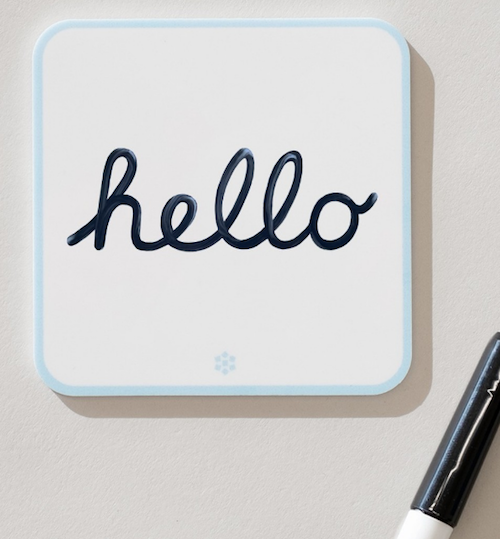
Sticky Nodes are:
- Erasable — Write with dry- or wet-erase markers, then wipe (or spritz and wipe) to start fresh.
- Restickable — Affix Sticky Nodes to any smooth surface, reposition at will, and they won’t leave a mark. Sticky Nodes use a unique “smooth-stick,” adhesive-ree technology, so you don’t have to worry about damaging your paint job.
- Reusable — Re-use face of the Sticky Node by erasing with a dry-erase marker or a damp cloth; re-use the whole Node by moving it to where it’s needed, over and over again.
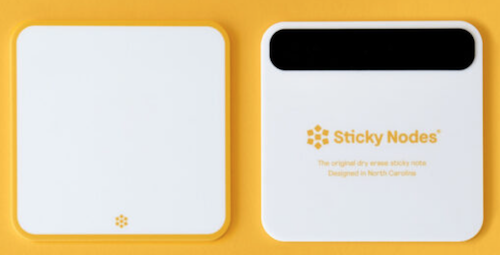
Around the office, at school, or in your home, put them on file cabinets or walls, whiteboards or chalkboards, mirrors or windows.
Capture and organize your genius thoughts, scribble notes, brainstorm on your own or with your need, or mix-and-match to help you study or tech. At home, post the WiFi password of the day draw a comic to greet your tiny human at the end of the school day. Your kids can keep track of weekly schedule items in their lockers, and at the office, you can make clear when you’re available to be bothered or to be left alone. Stick Nodes have all the same uses as sticky notes, but you don’t have to fill your trash can.
As noted in the video, products in the line can be affixed to the walls with adhesive or mounted (using screws), and some of the products are magnetic and can be used to attach the to metal items (like filing cabinets) or to other products in the line. Poppin has:
- wall shelves ($25), measuring 3.25″W x 4″H x 12.5″D, in blush, dark grey, slate blue, and white

- wall pockets ($25), measuring 12.5″W x 7″H x 2.5″D, in blush, dark grey, slate blue, and white

- wall cups ($14.50), measuring 4.5″W x 4.5″H x 2″D, in white, blush, dark grey, and slate blue
Each of the above products in the line are made of sturdy plastic polystyrene with a matte finish and come with removable adhesive strips, magnets, and screws for mounting. The removable adhesive strips hold up to 2 pounds; the magnets hold up to 1 pounds, and screws hold up to 15 pounds.
Poppin also makes dark grey fabric pinboards in two sizes, a 12.5″L x 12.5″W x 0.5″D square ($29) and a 25″W x 12″H jumbo version ($55).
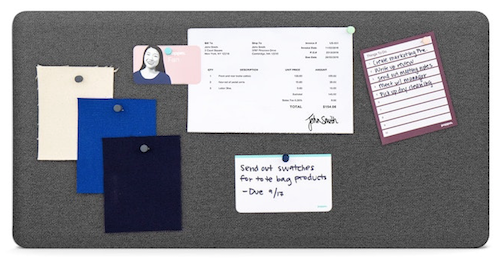
And, of course, they have a variety of pretty pushpins in assorted colors. But what I like best about Poppin’s “small space” line for making good use of vertical space is a product (actually three) they barely promote. There’s the white magnetic dry erase board ($26), measuring 12.5″W x 12.5″H x 0.5″D. But let’s face it, a plain white dry-erase board, even a magnetic one, isn’t that much to write home about.
But two other versions, with the same measurements and at the same price, up the ante. There’s the lined White Magnetic To-Do Dry-Erase Board:
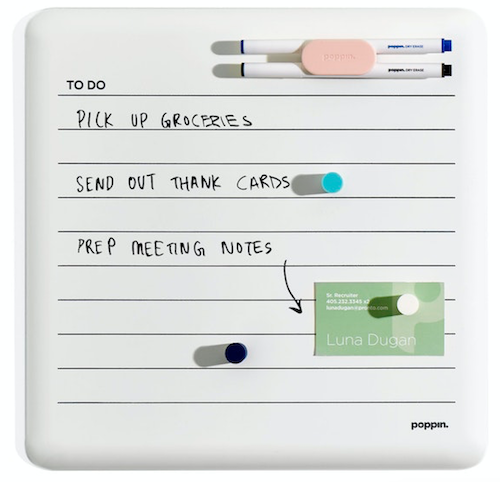
and the lined White Magnetic Weekly Dry Erase Board, pre-printed with the days of the week.
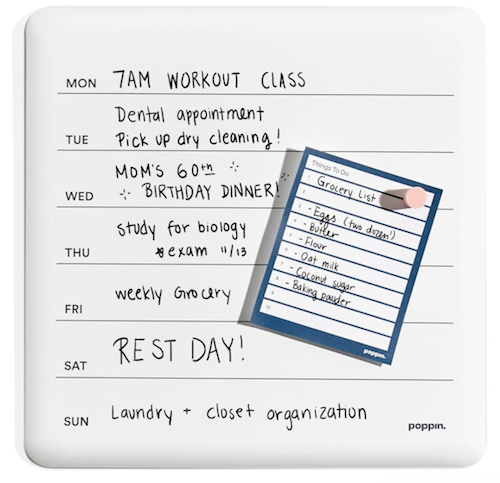
Of course, Poppin has pretty magnetic holders for the dry-erase pens and matching-color magnets.
Can’t you see these doing triple-duty at home, work, or in a dorm room?
TIKTOK MADE ME BUY IT
OK, TikTok didn’t actually make buy anything, but that’s what the voiceovers on so many of the little “advertainment” videos say. But TikTok did help me find two intriguing products.
PrintRGo
The first nifty office/school supply I saw recently kept appearing in my TikTok feed. It’s a tiny printer, and while I’m not the kind to push gadgets, I immediately saw the appeal of the PrintRGo thermal pocket printer. (Make sure you use the menu in the top right corner to switch from UK to US pricing.)
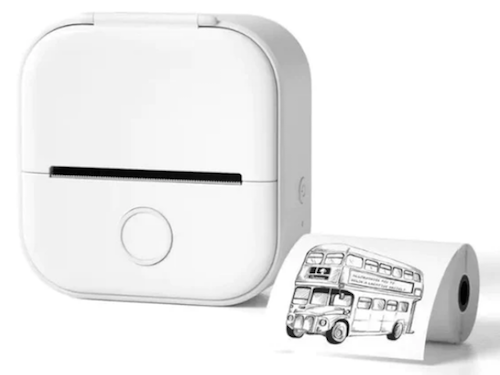
The use case may seem narrow, but if you’ve ever taken a biology course and had to label parts of a cell — and remember that the mitochondria is the powerhouse of the cell — or an studied for anatomy class where you had to learn a complex series of muscles, you know that you learn by spaced repetition and visual support.
Free-hand drawing and labeling is a pain, as is making copies. This little 3.4″ × 3.5″ × 1.6″ printer uses no ink, so you never have to wait for the ink to dry; instead, it uses adhesive-backed thermal paper to print at a maximum resolution of 203 DPI. (It does double-duty, so it also works some fun magic as a low-resolution photo printer and a label printer.)
Unfortunately, TikTok videos don’t embed particularly well, but this link will give you an idea of how the PrintRGo works.
In each box, you get a PrintRGo printer, charging cable, one roll of thermal paper, and a user’s manual. PrintRGo works via Bluetooth using the Phomemo app, and functions Android and IOS devices. It’s wireless, so you just pair it with your phone (just as with other Bluetooth devices like a Fitbit or keyboard) and you’re ready to print!
Take a photo with your phone, use the app to print it from your PrintRGo, and it thermal prints to sticker paper (at a speed of 10mm per second), and once you have your little masterpiece, printouts can adhere to your notebook or study cards.
Full-price for the PrintRGo is $78, but it’s currently selling at the official website for $48.
If you’re not comfortable purchasing from a TikTok advertiser, Amazon has a number of similarly adorable options that seem to work on the same principle, using the same Phomemo app. One version is the Phomemo M02 Pocket Printer ($49.99).
Bookmate
The other TikTok school/office supply that caught my attention disappeared from my feed (as often happens) when I fat-fingered (fat-thumbed?) the corner of my phone. No matter, because my fabulous friend and colleague Hazel Thornton independently sent it to me in a private TikTok message with a note, “New product for a blog post?” Indeed, it is!
Bookmate from AchieversMust appears to be designed primarily for teachers and students, but really anyone who reads and tends to annotate, take notes, or mark pages for followup will find it useful for reducing clutter. Bookmate combines one magnetic case (which holds sticky tape flags for marking pages and pen loops so you always have a writing tool or highlighter handy) and a magnetic base.
The case allows for you to refill the sticky flags, and you can use any standard tape flags to refill the Max or Pro cases, or purchase the same specific colors from AchieversMust. (You can only refill the Lite version with their tape flags. FYI.)
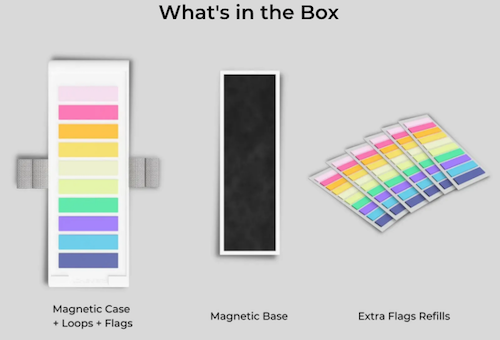
You put the magnetic base inside the front of your book or notebook and the magnetic case (with your tape flags and pens) sticks to the front. (The company claims the magnet is strong enough to adhere through a hardcover book, but I’m a twinge dubious.)
Some photos show users hanging glasses or sunglasses from an outer loop. Again, TikTok videos are wackadoodle when it comes to embedding, but you can see Bookmate in action on the Instagram page.There are three versions of the Bookmate:
- Max — has four pen loops (two on each side) and a 200-count of flags in ten different colors, for $39.95
- Pro — has four pen loops (two on the left, two on the right) (two on each side) and a 100-count of flags in six different colors, for $33.95
- Lite — has two pen loops (one on each side) and an 80-count of 2 different tape flags, for $19.95
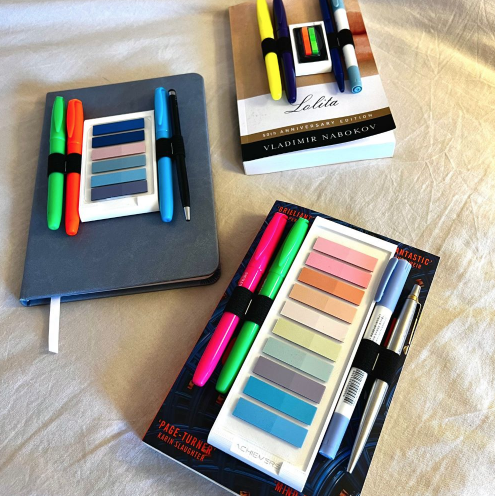
They offer free shipping on all orders above $60. Also, from now through September 10, 2023, you can buy two at 10% off each or buy 3 at 25% off each. (There’s also a 30-day money-back guarantee.)
EVERYTHING OLD IS NEW AGAIN
I remember visiting my father’s law office when I was a child, and I noticed that every attorney’s desk had a serious-looking leather desk pad. As a student in the 80s, my real work desk was wherever I found myself — a library study carrel, my bed, a random table in an empty classroom. By the time I started working in television, the closest anyone seemed to get to a desk pad was a giant desk calendar.
Nowadays, nobody is using a desk pad for blotting a fountain pen, but desk protectors are back in style. I was roaming through a big box store this weekend, looking for a lightning cable to use in my rental car (as mine is still in my stolen, damaged, recovered, and still-not-repaired Kia), when I noticed a stack of what looked like miniature yoga mats.
It turns out they were oversized desktop mouse pads. The one that caught my eye was a 35″ x 16″ pink, flowered, onn.-brand (yes, it’s “onn.”) XL Desktop Mouse Mat with an anti-slip base. The style is called Surf. (It also comes in grey and rainbow-stripes.)

And it was only $9.88!
It’s been a long time since I looked for a mouse pad or a desk mat, so I was surprised and delighted by how many products, marketed as either oversized mouse pads or desk pads, were available to brighten up the work space.
Yes, the real purpose is to give you a larger space to roll your mouse while keeping your glass or wooden desktop free of scratches, spills, dust, stains, and all matter of the detritus that ends up crumbly and sticky and yuckified on your desk. But why not feel like you’re basking luxury while doing homework or eking out a living?








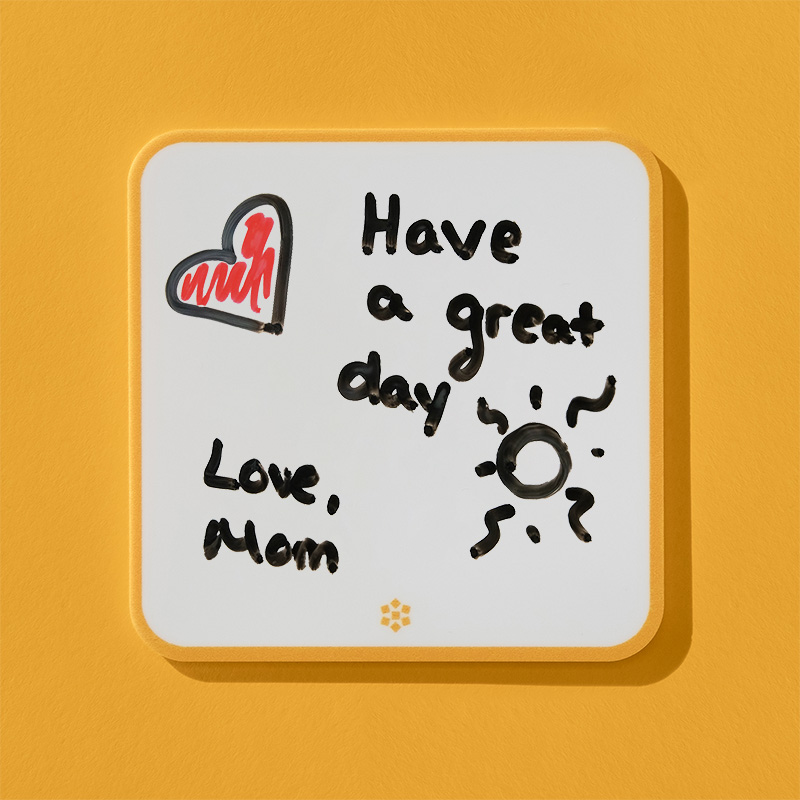

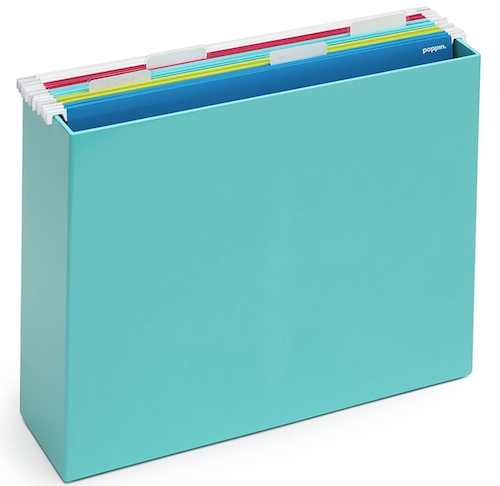






Follow Me